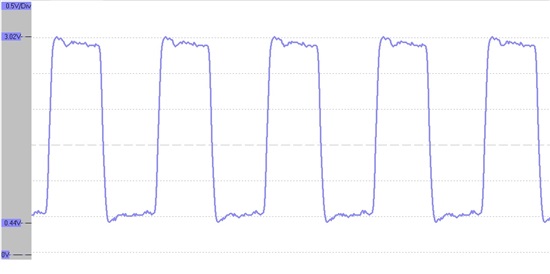Hi,
We use a CDCM7005 to generate multiple clocks out of a 1GHz VCXO and 10MHz reference clock.
We initialize Word 0 with 0x3E4 and Word 2 with 0xDA4D0CA2 to set P=4, M=250, N=1.
Word 1 and 3 remain with their default values.
While STATUS_REF and STATUS_VCXO are high (the LEDs are ON) the PLL_LOCK stays low (the PLL is not locked).
What could the issue?
Is the CDCM7005 supposed to generate an output on the Y0-Y4 if the PLL is not locked? I suspect not but couldn't find a clear answer.
I attached the schematic we use.
Thanks,
Valentin


